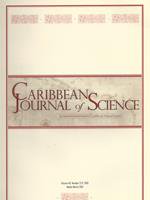Excavations at North Storr's Lake (SS-4) on San Salvador, Bahamas have yielded turtle barnacle wall plates (shell compartments) in association with skeletal remains of sea turtle and charcoal dated to ca. A.D. 932–1552. This is one of the few cases in which direct and indirect radiometric dates have been reported for archaeological sea turtle barnacles. The turtle barnacle has been identified as Chelonibia testudinaria (Linnaeus, 1758), a widespread, commensal species found on all genera of Cheloniidae in the world's oceans. Chelonibia testudinaria is the most often reported sea turtle barnacle and is commonly found on Caretta caretta (loggerhead) and Chelonia mydas (green turtle) dating as far back as the Miocene epoch. Wall plates of Chelonibia testudinaria occur in stratigraphic association with both loggerhead and green sea turtle remains at North Storr's Lake, appearing in the same archaeological strata as the sea turtle, therefore the association is clear. Sea turtle species were identified using stable isotope analysis (SIA) on bone; barnacles were identified by one of us (JDZ) using modern biological specimens for comparison. Accelerator Mass Spectrometer (AMS) dates from carbonized wood and bone in site stratigraphy, and dates on the barnacles themselves, span the period ca. A.D. 932–1552, indicating sea turtle exploitation by the indigenous Lucayans several centuries prior to the arrival of Columbus on San Salvador. AMS dates, site stratigraphy, and species identifications suggest that green turtle may have been harvested earlier and over a longer time span (ca. A.D. 1100–1500) than loggerhead (ca. A.D. 1311–1354). Based on these results, this locality at the North Storr's Lake site is interpreted as a traditional sea turtle butchery site where multiple species and individuals were repeatedly butchered over a relatively lengthy time period.
How to translate text using browser tools
1 January 2010
The sea turtle barnacle, Chelonibia testudinaria (Cirripedia: Balanomorpha: Coronuloidea), from pre-Columbian deposits on San Salvador, Bahamas
Jeffrey P. Blick,
John D. Zardus,
Doug Dvoracek
ACCESS THE FULL ARTICLE

Caribbean Journal of Science
Vol. 46 • No. 2–3
2010
Vol. 46 • No. 2–3
2010
archaeology
Bahamas
Cirripedia
Radiometric dating
San Salvador
sea turtle barnacles




